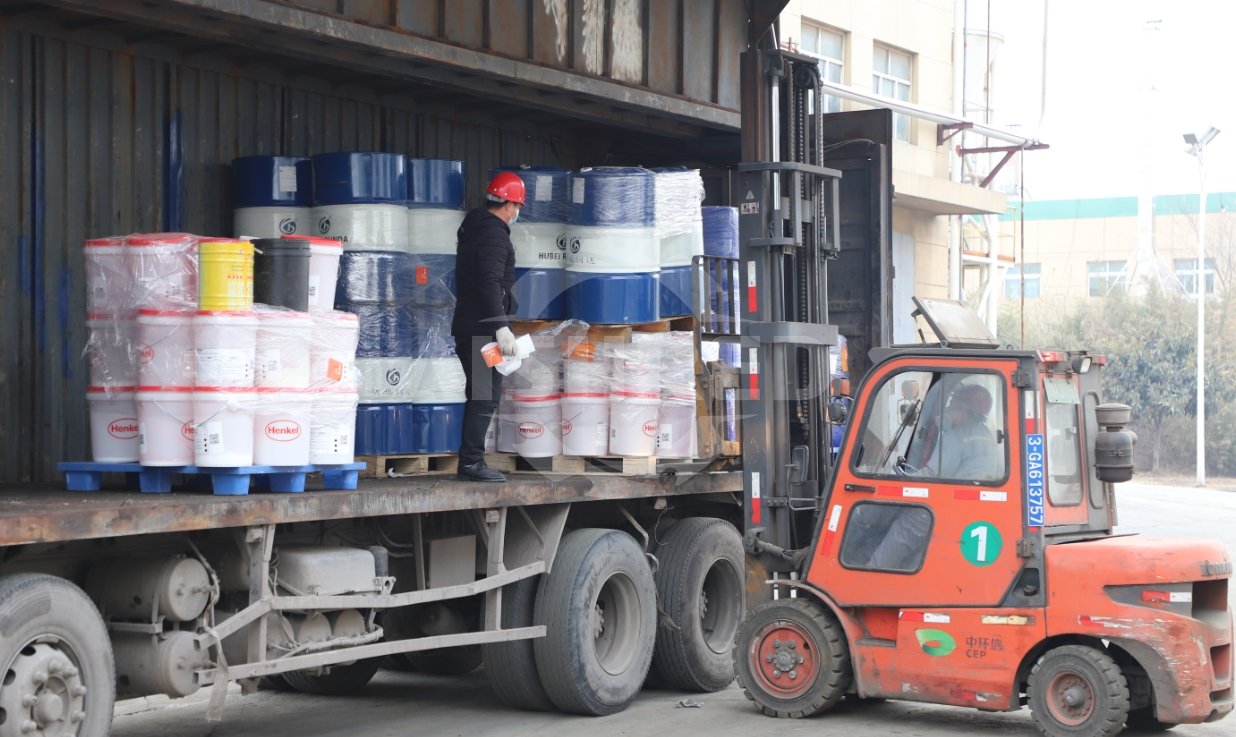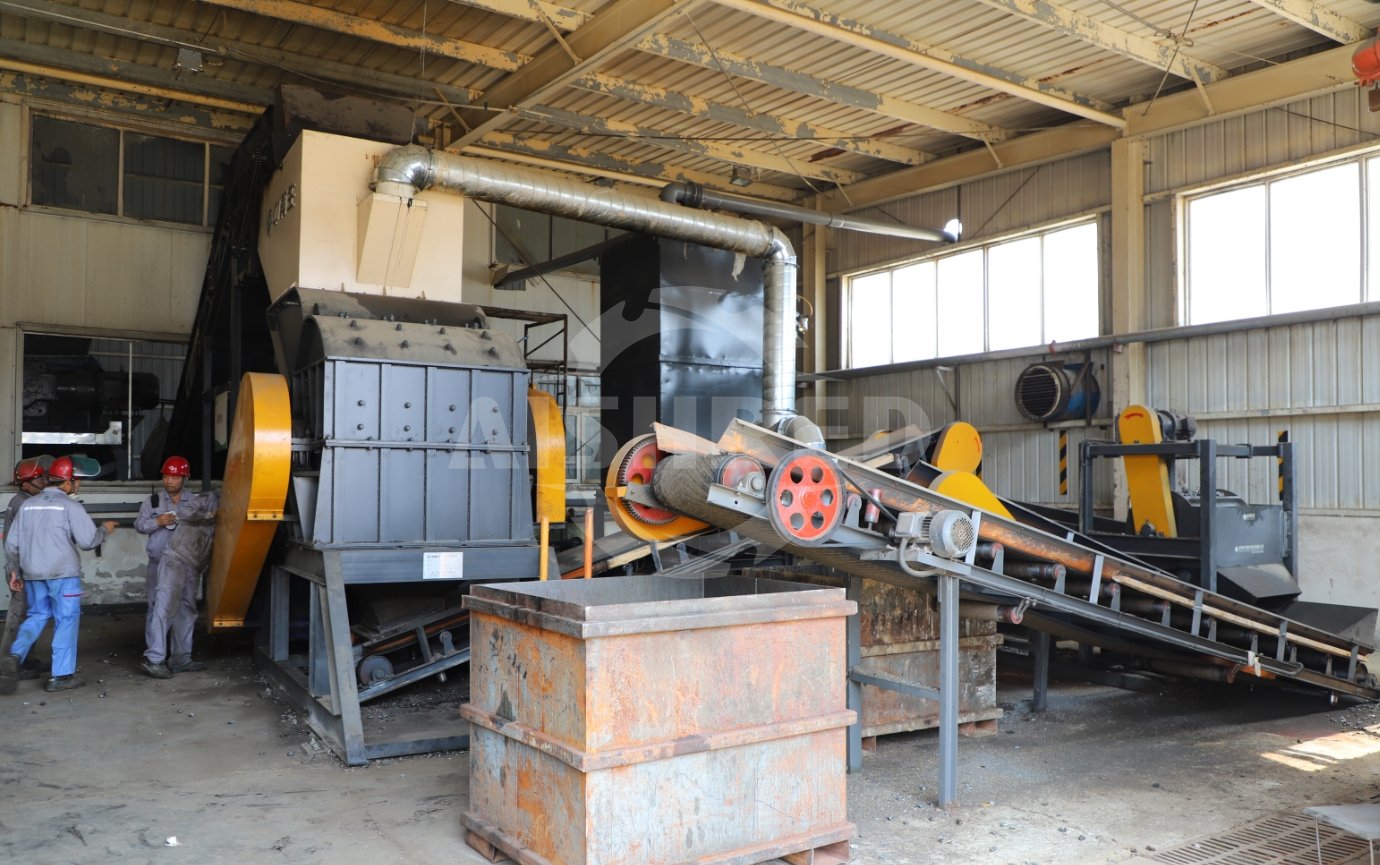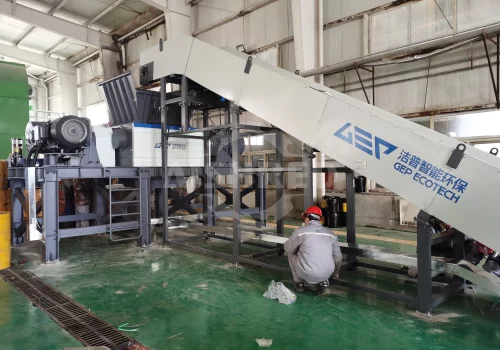In many countries, waste containers from paint factories—primarily metal drums (200L iron, 1000L IBCs) and plastic containers—are classified as hazardous due to toxic residues like solvents, resins, and pigments. Metal drums dominate industrial waste streams (over 70%), offering exceptional recycling value as high-purity scrap for steel production. Our Paint Waste Container Recycling Line, rigorously aligned with your provided technical specifications, ensures 100% process accuracy and compliance.

Core Process Flow: Fully Aligned with Documented Standards
1. Feeding & Pre-Treatment
- Material Handling
- Waste metal drums (paint/resin containers) are transported to the facility and stored in designated areas.
- Electric Forklifts move drums to the pre-treatment zone for sorting (removing plastic wraps, lids, etc.).
- Vacuum Feeding
- A high-power electromagnetic suction system lifts sorted drums into the feeding hopper, ensuring zero spillage.
Emission Control:
- Closed-loop operations prevent dust/VOC leakage.
- Residual solvents are extracted via vacuum systems (<50g/drum).
2. Shredding
- Industrial Shredders
- Drums are shredded into 5cm×10cm iron strips using heavy-duty, fully enclosed shredders.
- Pollutant Management
- Dust (G1) and VOCs (toluene, xylene) are captured through integrated suction ports.
- Collected gases pass through a "Spray Tower + Dual Activated Carbon Adsorption" system.
- Hazardous paint dust from spray towers is sent to licensed disposal partners.
Key Advantage:
- Standardized shredding optimizes downstream crushing efficiency.
3. Crushing
- High-Speed Crushers
- Shredded strips are crushed into 1cm³ particles in a sealed chamber.
- Friction generates 200–250°C heat, thermally separating paint residues from metal.
- Emission Handling
- Dust (C2) and VOCs (G3) are extracted and treated via the same "spray + carbon" system.
- Paint-laden sludge is classified as hazardous waste and disposed of legally.
Technical Edge:
- Heat-assisted crushing ensures 95% metal purity for downstream sorting.

4. Magnetic Separation
- Integrated Magnetic Sorting
- Conducted within the same enclosed unit as crushing.
- High-intensity magnets separate 99% pure iron granules from non-metallic residues.
- Output Streams
- Recycled Iron (S51): Sold directly to steel mills (yield: 85–90% of input).
- Toxic Paint Sludge (S52): Transferred to certified hazardous waste processors.
Environmental Compliance:
- All emissions during separation are routed to the adsorption system.
GEP ECOTECH specializes in advanced shredding and sorting equipment designed for versatile solid waste processing, including metal, plastics, and industrial containers. Our shredders and separators are widely used across industries to handle diverse materials, ensuring efficient resource recovery and reduced landfill dependency.
For high-risk hazardous waste (e.g., toxic paint drums, chemical containers), GEP ECOTECH offers a closed shredding system engineered for zero leakage and explosion-proof safety:
- Leak-Proof Design: Fully sealed structure prevents hazardous dust, VOCs, or residues from escaping during shredding and conveying.
- Explosion Prevention: Equipped with inert gas injection (e.g., nitrogen) and anti-spark components to eliminate ignition risks in flammable environments.
- Compliance Guaranteed: Meets global safety standards (ATEX, OSHA) and environmental regulations (EPA, EU directives).
Contact us today to learn how our equipment can be adapted to your operational goals.


